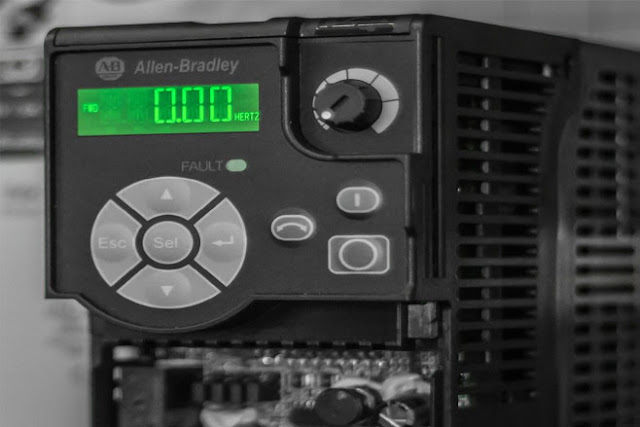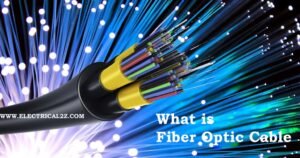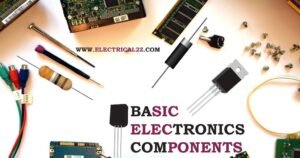What is PLC | Electricians who work in factories are called on to install and service programmable logic controllers. Programmable controllers (PLC) are electronic devices using integrated circuits and semiconductors for remote switching.
 |
| What is PLC |
Table of Contents
What Does PLC Stand For?
PLC stands for Programmable Logic Controller. It is a digital computer that is used for automation of industrial processes(electrical & mechanical), like controlling different machines. It is also known as programmable automation controllers.
What is PLC | Programmable Logic Controller
Since they are made of solid-state electronics, they have no moving parts. These units have been very successful in automating machinery and working for long periods without maintenance or attention of any kind. They have largely replaced relays as the workhorses of industrial controls.
In many locations and for many jobs the programmable logic controller (PLC) is preferred over the robot. It is less expensive than the robot and can be relied on to do a specific job accurately and repeatedly without attention.
The PLC manufacturer supplies installation and programming instructions for each type of PLC. Standard electrical wiring practices apply to the installation of these units. However, there are some particular concerns in troubleshooting these units.
Since they use integrated circuits and semiconductors in their design, they are subject to the same problems as these devices. The output circuit usually consists of a triac (in some instances, a silicon controlled rectifier). The triac is sensitive to applied voltages, current, and internal power dissipation and is limited to a maximum peak off-state voltage.
Exceeding this alternating current (AC) peak causes a dielectric-type breakdown that may result in a permanent short-circuit failure. Often a semiconductor device, a varistor (THY), is placed across the triac to limit the peak voltage to some value below the maximum rating; in other cases, an resistor capacitor (RC) snubber (made up of a RC filter circuit) alone may adequately protect the triac from excess voltage. The direct current (DC) output consists of a power transistor protected against inductive loads by a diode.
 |
| PLC System |
Well-designed input circuits are less susceptible to damage than are output circuits using a triac. However, they do respond to transients (line surges) and noise on the input line. Special precautions must be taken to reduce the sources of interference. If an input circuit is damaged, the circuits can fail, and the control circuit senses it.
The various outputs then respond accordingly and, depending on the application of the system, could place the system in a hazardous condition.
In situations involving such applications, an external means of monitoring the circuit inputs should be provided or redundant inputs should be used.
Sources of Damage to Semiconductors
Semiconductors can be damaged by temperature and certain atmospheric contaminants, by shock and vibration, and by noise.
Temperature
Excessive temperature can cause semiconductor materials to malfunction. The failure rate increases rapidly with increase in temperature.
Even when stored, the devices are subject to problems caused by excessive temperature. Elevated ambient temperature can also cause intermittent problems that disappear when the temperature is lowered again. Airflow should be maintained around semiconductors to keep temperatures within the limits stated for the device.
Shock and Vibration
Semiconductor-type circuits are generally not very susceptible to shock and vibration. However, it is possible that shock and vibration can cause problems if there are loose connections or worn insulation on wiring.
Noise
Noise is generated by a number of sources in an industrial setting. Noise is defined here as electrical energy of random amounts and frequencies that adversely affects the functioning of electronic circuits. Most noise-caused malfunctions are of the nuisance type, causing operating errors, but some can result in hazardous machine operation.
Noise enters the control circuits by a number of different means through the input lines, the output lines, or the power supply lines. It may be coupled into the lines electrostatically through capacitance between these lines and the lines carrying the noise signals. In most industrial areas, a high potential is usually required, or long, closely spaced conductors are necessary.
Noise caused by magnetic coupling is also quite common when control lines are close to lines carrying large current. The signals in this case are coupled through mutual inductances, such as in a transformer.
 |
| What is PLC Programming |
Electrostatic and magnetic noise may also be directly coupled into the control logic circuit. Programmable logic controllers have been designed to ignore problems created by noise. However, it is impossible to design for all situations.
Therefore, filters, shielding circuitry, and insensitive circuitry have been placed in the design of the programmable logic controllers for eliminating noise problems. It is also a good practice to make sure that no two PCs use the same grounding wire.
Final Word
Hope you understand this article about What is PLC ? Programmable Logic Controller. Incase of any doubt please comment below. Subscribe our website to get every new post update to your email. Please follow our website – ElectricianWorld.net for future updates. Thank you for visiting our website.



